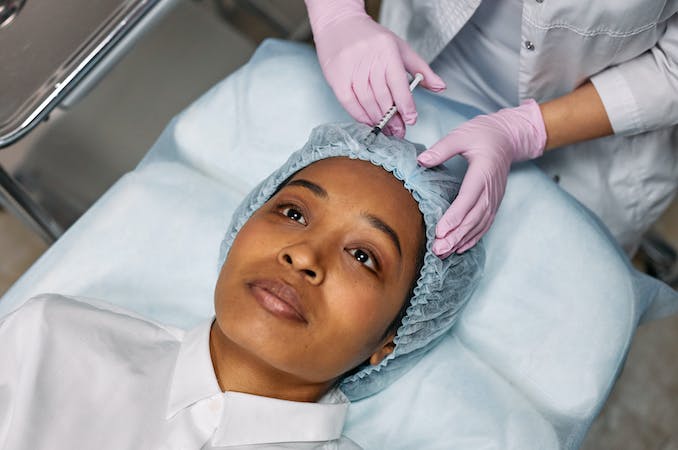The world of cosmetic enhancements has witnessed a surge in popularity, with dermal filler injections emerging as a favoured choice for those seeking facial rejuvenation. As individuals explore the realm of aesthetic procedures, it becomes crucial to delve into the potential link between dermal fillers and skin cancer.
Understanding Dermal Fillers
Dermal fillers, classified into various types, work by restoring volume and smoothing out fine lines on the face. Hyaluronic acid fillers, collagen stimulators, and other substances contribute to a more youthful appearance, making these treatments a sought-after solution in the world of cosmetic dermatology.
The Rise in Dermal Filler Injections
Statistics reveal a growing trend in the demand for dermal filler treatments. People opt for these procedures for reasons ranging from combating signs of aging to enhancing specific facial features. As the popularity of dermal fillers continues to rise, it prompts an essential question: What considerations should individuals keep in mind regarding the potential link between dermal fillers and skin cancer?
Link Between Dermal Fillers and Skin Cancer
Recent studies have sparked discussions about a possible connection between dermal fillers and skin cancer. While the evidence is not conclusive, it raises awareness about the need for informed decision-making and vigilant monitoring for those who choose these cosmetic procedures.
Types of Skin Cancer Relevant to Dermal Filler Recipients
Understanding the types of skin cancer relevant to individuals with dermal fillers is paramount. Basal cell carcinoma, squamous cell carcinoma, and melanoma are among the skin cancers that recipients should be vigilant about. This section will delve into the specifics of each type and the associated considerations.
Basal Cell Carcinoma:
Dermal filler recipients should be vigilant about basal cell carcinoma. This type of skin cancer is the most common but tends to grow slowly and is usually non-life-threatening. Understanding its characteristics and potential risks is crucial for individuals with dermal fillers.
Squamous Cell Carcinoma:
Another skin cancer type to be aware of is squamous cell carcinoma. While it is more aggressive than basal cell carcinoma, early detection and intervention can be highly effective. Recipients need to recognize the signs and consider the associated considerations for this particular skin cancer.
Melanoma:
Melanoma, known for its potential to spread rapidly, is a critical concern for dermal filler recipients. This type of skin cancer is often linked to changes in moles and pigmentation, making regular skin checks and prompt medical attention essential. Understanding the specifics of melanoma and its associated considerations is paramount for those considering or receiving dermal filler treatments.
Basal Cell Carcinoma:
Dermal filler recipients should be vigilant about basal cell carcinoma. This type of skin cancer is the most common but tends to grow slowly and is usually non-life-threatening. Understanding its characteristics and potential risks is crucial for individuals with dermal fillers.
Squamous Cell Carcinoma:
Another skin cancer type to be aware of is squamous cell carcinoma. While it is more aggressive than basal cell carcinoma, early detection and intervention can be highly effective. Recipients need to recognize the signs and consider the associated considerations for this particular skin cancer.
Melanoma:
Melanoma, known for its potential to spread rapidly, is a critical concern for dermal filler recipients. This type of skin cancer is often linked to changes in moles and pigmentation, making regular skin checks and prompt medical attention essential. Understanding the specifics of melanoma and its associated considerations is paramount for those considering or receiving dermal filler treatments.
Identifying Warning Signs
Recognizing warning signs is crucial for individuals with dermal fillers. Changes in moles, unusual pigmentation, and skin irregularities may indicate potential issues. Regular skin checks and immediate consultation with a healthcare professional are vital for early detection and intervention.
Consultation and Communication
Open communication with healthcare professionals is fundamental. Before opting for dermal filler injections, individuals should engage in thorough discussions with their practitioners. This section will outline essential questions to ask, ensuring that patients are well-informed and confident in their choices.
Safety Measures and Precautions
Ensuring safety during and after dermal filler treatments requires careful consideration. Choosing qualified practitioners, understanding the products used, and following post-treatment care instructions significantly reduce the risk of complications. This part of the article will elaborate on these safety measures.
Case Studies
Real-life case studies will provide insights into skin cancer cases related to dermal fillers. By examining these cases, readers can gain a deeper understanding of the potential risks, challenges faced by individuals, and the preventive measures taken to address the concerns.
Myth-Busting
Common misconceptions surrounding dermal fillers and their alleged association with skin cancer will be addressed. Evidence-based information will be provided to dispel fears and ensure that readers have accurate knowledge when making decisions about cosmetic procedures.
Advancements in Dermal Filler Safety
The article will explore industry advancements and innovations contributing to safer dermal filler procedures. Technological improvements, research breakthroughs, and best practices adopted by practitioners will be highlighted.
Personal Stories
Narratives from individuals who have undergone dermal filler treatments will add a personal touch to the article. Their experiences, challenges, and positive outcomes will provide readers with relatable insights into the world of cosmetic enhancements.
Expert Opinions
Insights from dermatologists and healthcare professionals will be featured. These experts will share their perspectives on the potential link between dermal fillers and skin cancer, offering recommendations and guidance for individuals considering or currently receiving these treatments.
The Emotional Impact
Beyond the physical considerations, the article will delve into the emotional impact of skin cancer concerns associated with dermal fillers. Coping strategies, psychological support, and resources for individuals navigating these uncertainties will be discussed.
Conclusion
In conclusion, while the link between dermal fillers and skin cancer is not definitively established, awareness and vigilance are paramount. By staying informed, engaging in open communication with healthcare professionals, and adopting safety measures, individuals can enjoy the benefits of dermal fillers while minimising potential risks.

